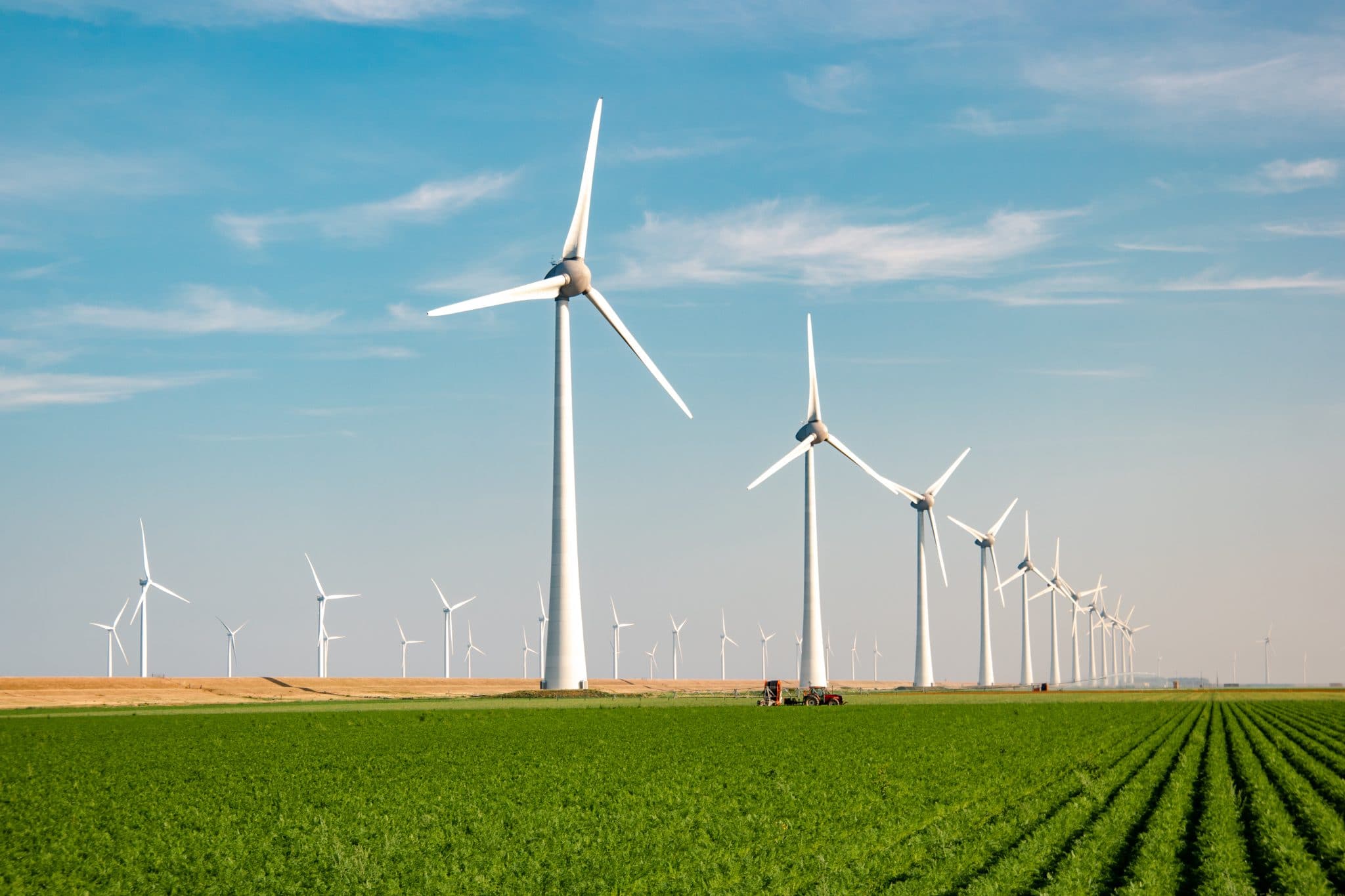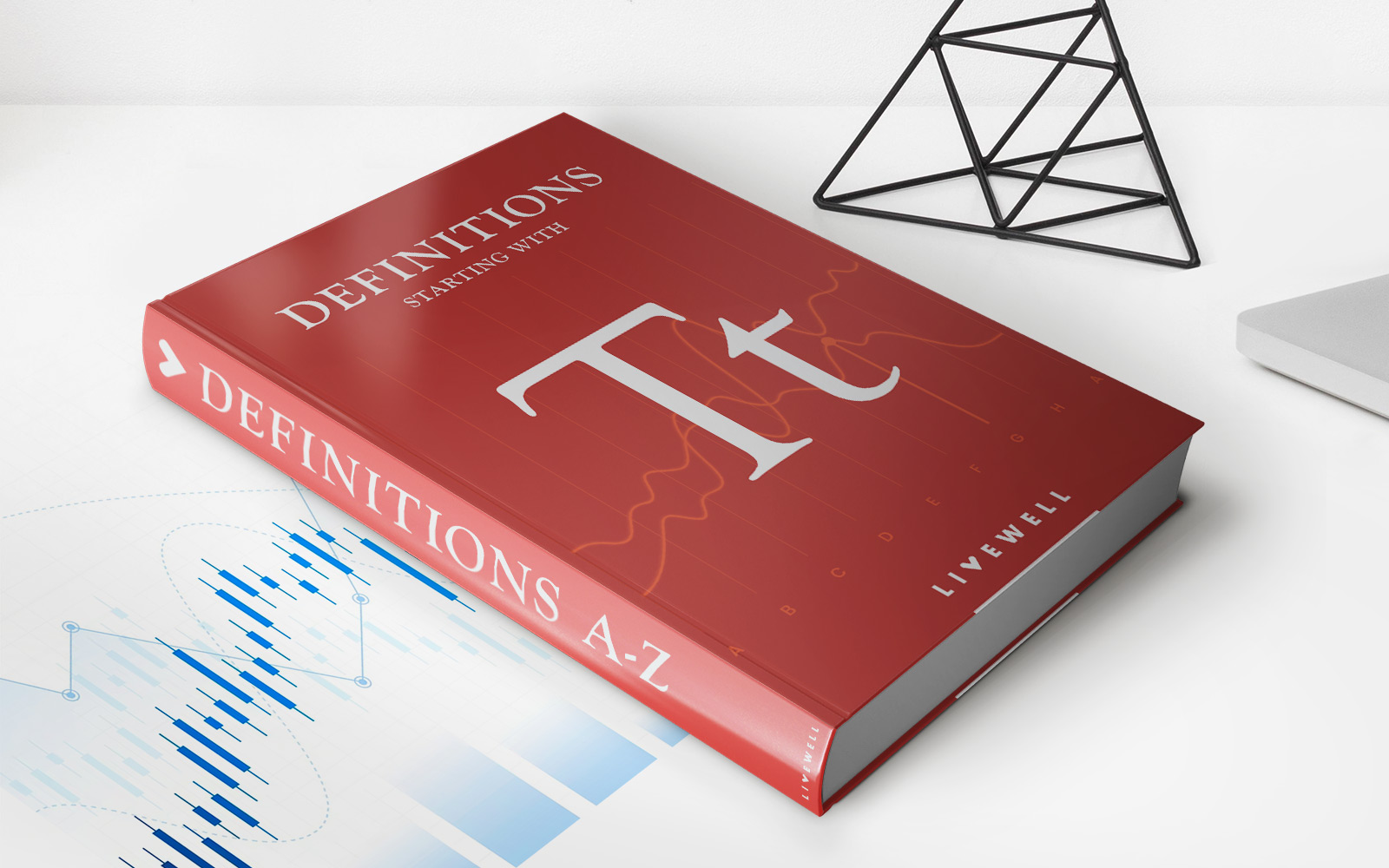

Finance
How To Invest In Wind Power Stocks
Published: January 17, 2024
Learn how to invest in wind power stocks and explore the potential returns in the finance sector. Maximize your investment opportunities and contribute to sustainable energy growth.
(Many of the links in this article redirect to a specific reviewed product. Your purchase of these products through affiliate links helps to generate commission for LiveWell, at no extra cost. Learn more)
Table of Contents
Introduction
With the increasing global demand for clean and sustainable energy sources, the wind power industry has emerged as a promising investment opportunity. Wind power stocks offer investors a chance to be part of the renewable energy revolution while reaping potential financial rewards.
As the world shifts towards more environmentally friendly alternatives, wind power has gained significant traction as a reliable and efficient source of renewable energy. Harnessing the power of wind turbines, this industry has experienced rapid growth, attracting both institutional and individual investors.
Investing in wind power stocks not only aligns with the goal of combating climate change, but it also presents an opportunity for investors to diversify their portfolio and potentially achieve long-term financial gains.
This article will provide you with a comprehensive guide on how to invest in wind power stocks. We will explore the factors to consider before investing, the key players in the industry, how to analyze wind power stocks, and the risks and rewards associated with this investment. Additionally, we will offer insights on how to build a well-rounded wind power stocks portfolio.
It’s important to note that investing in any sector carries risks, and wind power stocks are no exception. However, with thorough research and careful consideration, you can navigate the market and make informed investment decisions.
So, if you’re ready to explore the world of wind power stocks and potentially contribute to a greener future while pursuing financial growth, let’s dive in!
Understanding Wind Power Stocks
Before investing in wind power stocks, it’s crucial to have a solid understanding of the industry and how it operates. Wind power stocks refer to the shares of companies involved in the development, manufacturing, installation, and maintenance of wind turbines and wind farms.
Wind power companies typically generate revenue through the sale of electricity produced by their wind farms to utility companies or through long-term power purchase agreements (PPAs). As the demand for clean energy increases, these companies stand to benefit from a growing market and favorable government policies that promote renewable energy.
One of the key advantages of investing in wind power stocks is the ability to tap into a sector that has the potential for long-term growth. As countries around the world aim to reduce carbon emissions and transition to cleaner energy sources, wind power is expected to play a significant role in meeting these targets. This sustained demand for wind power presents opportunities for investors to capitalize on the industry’s expansion.
When investing in wind power stocks, it’s important to consider the different segments within the industry. This includes companies involved in wind turbine manufacturing, project development, operation and maintenance, and asset management. Diversifying your portfolio across these segments can help mitigate risk and take advantage of various growth opportunities.
In addition to understanding the industry landscape, it’s crucial to familiarize yourself with the key metrics and financial indicators used to evaluate wind power stocks. These may include factors such as installed capacity, capacity utilization, revenue growth, profitability, and the company’s ability to secure long-term contracts.
Furthermore, staying up to date with technological advancements and innovations in the wind power industry is essential. Improvements in turbine efficiency, energy storage solutions, and grid integration can have a significant impact on the long-term viability and profitability of wind power companies.
By developing a thorough understanding of the wind power sector, its dynamics, and key performance indicators, you’ll be better equipped to make informed investment decisions and navigate the potentially rewarding yet challenging world of wind power stocks.
Factors to Consider Before Investing
Before diving into wind power stocks, it’s essential to take several factors into consideration to make informed investment decisions. Understanding these factors will help you assess the potential risks and rewards of investing in the sector.
Market Demand: Evaluate the current and projected demand for wind power. Consider factors such as government policies, climate change initiatives, and the growth of renewable energy targets in different countries. High demand indicates a favorable market for wind power stocks.
Regulatory Environment: Assess the regulatory environment for wind power in different regions. Favorable regulations and incentives, such as tax credits or feed-in tariffs, can significantly impact the profitability of wind power companies.
Cost of Energy Production: Analyze the cost of wind energy production compared to conventional sources such as fossil fuels. Lower production costs can lead to higher profit margins for wind power companies and make them more competitive in the market.
Technological Advancements: Stay updated on the latest advancements in wind turbine technology. Newer and more efficient turbines can increase the overall productivity and profitability of wind farms, potentially attracting more investment in the sector.
Financial Performance: Evaluate the financial health and performance of wind power companies before investing. Look for indicators such as revenue growth, profitability, debt levels, and cash flow. A strong financial position indicates stability and potential for growth in the future.
Competitive Landscape: Assess the competitive landscape of the wind power industry. Consider the market share of key players, barriers to entry, and the presence of any dominant companies. Understanding the competitive dynamics will help you identify potential investment opportunities and risks.
Sustainability and Environmental Impact: Consider the environmental impact of investing in wind power stocks. Wind energy is seen as a more sustainable and environmentally friendly alternative to fossil fuels. Investing in companies that prioritize sustainability and have strong environmental track records can align with your values and contribute to a greener future.
Risk Assessment: Evaluate the risks associated with investing in wind power stocks. These may include regulatory changes, fluctuations in energy prices, technological advancements in competing energy sources, and project development risks. Understanding and mitigating these risks will be crucial for a successful investment strategy.
By carefully considering these factors, you can gain a comprehensive understanding of the wind power industry and make informed investment decisions that align with your financial goals and risk tolerance.
Key Players in the Wind Power Industry
The wind power industry is comprised of several key players who are at the forefront of driving the development and growth of this renewable energy sector. These companies play crucial roles in various aspects of the wind power value chain. Understanding the key players will provide valuable insights when investing in wind power stocks.
1. Wind Turbine Manufacturers: Companies such as Vestas, Siemens Gamesa, and GE Renewable Energy are prominent manufacturers of wind turbines. These companies design, manufacture, and sell wind turbines for onshore and offshore applications. They continually innovate to improve turbine efficiency and reduce costs, making them key players in the industry.
2. Project Developers: Companies like Ørsted, NextEra Energy, and Iberdrola are involved in developing wind power projects. They identify suitable locations, secure land rights, obtain necessary permits, and plan the construction of wind farms. Project developers play a critical role in bringing wind power projects to fruition.
3. Operations and Maintenance (O&M) Providers: O&M providers, such as Vestas, Siemens Gamesa, and Enercon, offer services to ensure the smooth operation and maintenance of wind farms. They perform regular inspections, repairs, and maintenance to optimize performance and maximize the lifespan of the turbines.
4. Asset Management Companies: Asset management companies, such as Brookfield Renewable Partners and TerraForm Power, specialize in acquiring, owning, and managing wind power assets. They optimize the performance of wind projects, handle financial and operational aspects, and generate returns for investors.
5. Utility Companies: Utility companies, including National Grid, Enel, and E.ON, are major players in the wind power sector. They purchase electricity generated from wind farms through power purchase agreements (PPAs) and integrate wind power into their energy mix. These companies play a crucial role in the off-take of wind energy.
6. Financial Institutions: Financial institutions, such as pension funds and infrastructure investment firms, are increasingly investing in the wind power industry. They provide capital and funding to wind power projects and companies, helping to fuel industry growth and support project development.
7. Research and Development (R&D) Organizations: R&D organizations, like the National Renewable Energy Laboratory (NREL) and the European Wind Energy Association (EWEA), conduct cutting-edge research and development in wind power technologies. They contribute to advancements in turbine design, energy storage, grid integration, and other crucial aspects of the industry.
These key players drive innovation, efficiency, and growth in the wind power industry. Understanding their roles and contributions will aid you in evaluating investment opportunities and identifying companies with strong market positions, financial stability, and a track record of success.
Analyzing Wind Power Stocks
Analyzing wind power stocks requires a comprehensive understanding of the factors that can impact the performance and profitability of companies in the industry. Here are key aspects to consider when evaluating wind power stocks:
1. Financial Performance: Assess the financial health and performance of wind power companies by analyzing key financial indicators. Look at metrics such as revenue growth, profitability, operating margins, and return on investment. A company with consistent growth, solid financials, and strong profitability is often an attractive investment option.
2. Installed Capacity and Growth Potential: Evaluate the company’s current installed capacity and its growth potential. Look for companies that have a substantial pipeline of projects or plans for expansion. A company with a diversified portfolio and a strong position in growing markets indicates potential for long-term growth.
3. Long-Term Contracts and Revenue Visibility: Consider the presence of long-term contracts or power purchase agreements (PPAs). These agreements provide revenue visibility and stability, ensuring a predictable cash flow for the company. Companies with a robust portfolio of secured contracts are often more attractive to investors.
4. Technological Innovation: Assess the company’s commitment to technological advancements and innovation. Look for companies that invest in research and development to improve turbine performance, increase energy efficiency, and reduce operating costs. Technological advancements can give companies a competitive advantage and lead to higher profitability.
5. Competitive Position: Analyze the company’s competitive position within the wind power industry. Consider factors such as market share, brand recognition, and the company’s ability to differentiate itself from the competition. A strong competitive position can indicate a sustainable advantage and potential for long-term success.
6. Regulatory Environment: Evaluate the regulatory environment and government support for wind power in the company’s operating regions. Consider factors like renewable energy targets, subsidies, and incentives. Companies operating in regions with supportive policies are more likely to thrive and generate higher returns.
7. ESG Considerations: Environmental, Social, and Governance (ESG) factors are increasingly important when analyzing wind power stocks. Evaluate a company’s commitment to sustainability, renewable energy practices, and corporate governance. Investing in companies with a strong ESG performance aligns with responsible investing practices and can mitigate long-term risks.
8. Risk Assessment: Assess the risks associated with investing in wind power stocks. Consider factors such as technological obsolescence, regulatory changes, project delays, and the company’s exposure to fluctuating energy prices. A comprehensive risk assessment will help you make informed investment decisions.
Analyzing wind power stocks requires a combination of financial analysis, industry knowledge, and a long-term perspective. By considering these key factors, you can better evaluate investment opportunities and select wind power stocks that align with your investment objectives and risk tolerance.
Risks and Rewards of Investing in Wind Power Stocks
Investing in wind power stocks offers both potential rewards and inherent risks. Understanding these factors is essential for making informed investment decisions. Let’s explore the risks and rewards associated with investing in wind power stocks:
Rewards:
1. Potential for Growth: Wind power is a rapidly growing industry, driven by increasing demand for clean and renewable energy. Investing in wind power stocks provides an opportunity to participate in the sector’s growth and capitalize on the expanding market.
2. Long-Term Revenue Streams: Wind power companies often secure long-term contracts or power purchase agreements (PPAs) with utility companies, providing predictable revenue streams. These contracts ensure a steady cash flow and can contribute to stable returns for investors.
3. Environmental Impact: Investing in wind power stocks allows individuals to contribute to a cleaner and sustainable future. By supporting companies in the wind power sector, investors can help drive the transition to renewable energy sources and combat climate change.
4. Diversification: Adding wind power stocks to an investment portfolio can provide diversification. The renewable energy sector operates independently from traditional energy sources, offering a potential hedge against market volatility and economic fluctuations.
Risks:
1. Regulatory Changes: Government policies and regulations related to renewable energy can impact the profitability and viability of wind power projects. Changes in subsidies, tax incentives, or energy pricing can introduce uncertainties and affect the financial performance of wind power stocks.
2. Fluctuations in Energy Prices: Wind power companies are exposed to fluctuations in energy prices, which can impact their revenue and profitability. Changes in electricity market prices can influence the competitiveness and overall profitability of wind power projects.
3. Project Development Risks: The development and construction of wind farms involve various risks, such as delays, cost overruns, and technical challenges. These risks can impact the financial performance of wind power companies and delay returns for investors.
4. Technological Advancements: While technological advancements can benefit the wind power industry, they can also create risks. Rapid improvements in turbine technology may render older or less efficient turbines obsolete, affecting the competitiveness of companies that have not kept up with technological advancements.
5. Financial Performance: Wind power stocks can be influenced by the overall financial performance of the companies in the sector. Factors such as debt levels, liquidity constraints, and revenue growth can impact the stock’s valuation and potential for growth.
6. Weather Dependence: Wind power generation relies on favorable wind conditions, which can vary in different regions and seasons. Fluctuations in wind availability and intensity can impact the energy output of wind farms and therefore the financial performance of wind power companies.
It’s important to note that all investments carry inherent risks. Conducting thorough research, diversifying investments, and maintaining a long-term perspective can help mitigate the risks associated with investing in wind power stocks while maximizing potential rewards.
Building a Wind Power Stocks Portfolio
Building a wind power stocks portfolio involves careful selection and diversification to optimize potential returns while managing risks. Here are some key steps to consider when constructing a wind power stocks portfolio:
1. Research and Analysis: Begin by conducting thorough research on wind power companies. Evaluate their financial performance, growth prospects, market position, and commitment to sustainability. Look for companies with a strong track record and a solid pipeline of projects.
2. Diversification: Diversify your portfolio by investing in a mix of wind power companies across different segments of the industry. Consider including companies involved in wind turbine manufacturing, project development, operation and maintenance, and asset management. This diversification can help spread risks and take advantage of various growth opportunities.
3. Risk Management: Assess the risk profile of each company before investing. Analyze factors such as regulatory environment, technological advancements, and financial stability. Understanding and managing risks within your portfolio is crucial for long-term success.
4. Consider Regional Exposure: Evaluate wind power opportunities in different regions. Investing in companies with operations in diverse geographic locations can provide exposure to varying market dynamics, regulatory frameworks, and weather conditions. This can help mitigate risks associated with specific regions and enhance portfolio resilience.
5. Portfolio Monitoring: Regularly monitor the performance of your wind power stocks portfolio. Stay informed about industry trends, technological advancements, and regulatory changes that may impact the companies in your portfolio. Adjust your portfolio as needed to maintain alignment with your investment goals and risk tolerance.
6. Long-Term Focus: Consider wind power stocks as long-term investments. The renewable energy sector, including wind power, is poised for sustained growth over the coming years. Adopting a patient and disciplined approach will allow you to capitalize on the industry’s potential and optimize returns.
7. Rebalancing and Adjustments: Periodically review and rebalance your wind power stocks portfolio. As the industry evolves and new opportunities arise, consider adding or removing holdings to ensure your portfolio remains aligned with your investment strategy.
8. Seek Professional Advice: If you are new to investing or lack expertise in the wind power sector, consider seeking advice from a financial advisor or investment professional with knowledge of the renewable energy industry. Their insights and guidance can help you make informed decisions and create a well-rounded wind power stocks portfolio.
By following these steps and staying informed about the wind power industry, you can build a diversified portfolio of wind power stocks that aligns with your investment objectives and risk tolerance. Remember to regularly review and adjust your portfolio to take advantage of emerging opportunities and to mitigate potential risks.
Conclusion
Investing in wind power stocks offers not only the potential for financial gains but also the opportunity to contribute to a more sustainable and cleaner future. The wind power industry has experienced remarkable growth and has become a prominent player in the global energy landscape.
Before investing in wind power stocks, it is crucial to understand the dynamics of the industry, evaluate key factors such as market demand, regulatory environment, and financial performance of companies. Analyzing wind power stocks requires a comprehensive approach that takes into account financial indicators, technological advancements, and competitive positioning.
While wind power stocks offer the potential for attractive rewards, it is important to be aware of the risks associated with this investment. Fluctuations in energy prices, regulatory changes, project development risks, and technological advancements are factors that need to be carefully considered.
Building a wind power stocks portfolio involves conducting thorough research, diversifying investments, and managing risks. By selecting companies across different segments of the industry and monitoring the portfolio’s performance, investors can optimize potential returns and navigate market fluctuations.
Investing in wind power stocks aligns with the global shift towards renewable and sustainable energy sources. As governments worldwide commit to reducing carbon emissions and supporting the growth of renewable energy, the wind power sector is expected to continue its expansion.
In conclusion, investing in wind power stocks provides an opportunity to be part of the renewable energy revolution while potentially realizing financial gains. By carefully evaluating industry dynamics, considering risks and rewards, and constructing a well-diversified portfolio, investors can position themselves for success in the dynamic and promising wind power industry. Remember to stay informed, adapt to market changes, and consider seeking professional advice when needed.














